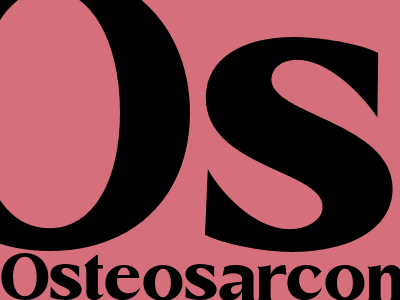Osteosarcoma: A Comprehensive Guide to Causes, Symptoms, Diagnosis, Treatment, and Prognosis
Understanding Osteosarcoma: An Overview
Osteosarcoma is the most common type of bone cancer, primarily affecting children and adolescents. It arises from immature bone cells and is characterized by its aggressive nature and tendency to spread to other parts of the body.
Causes and Risk Factors: Unraveling the Origins of Osteosarcoma
The exact cause of osteosarcoma remains unknown, but several risk factors have been identified:
- Hereditary Factors: Inherited genetic mutations, such as the RB1 gene mutation, can increase the risk of developing osteosarcoma.
- Radiation Exposure: Exposure to high levels of radiation, such as during cancer treatment, can increase the risk of developing osteosarcoma.
- Paget's Disease of Bone: This chronic bone disorder can lead to the development of osteosarcoma in some cases.
Symptoms: Recognizing the Signs and Symptoms
Osteosarcoma typically presents with the following symptoms:
- Pain: Persistent pain in the affected bone, which may worsen at night or with activity
- Swelling: Noticeable swelling or lump in the area around the affected bone
- Limited Range of Motion: Difficulty moving or using the affected limb due to pain or swelling
- Fever: A low-grade fever that may accompany other symptoms
- Weight Loss: Unexplained weight loss can be a sign of advanced osteosarcoma
Diagnosis: Confirming the Presence of Osteosarcoma
Diagnosing osteosarcoma involves a comprehensive evaluation:
- Physical Exam: A thorough physical examination to assess the affected area and identify any abnormalities
- Imaging Tests: X-rays, CT scans, and MRI scans to visualize the affected bone and detect any tumors
- Biopsy: A procedure to remove a small sample of tissue from the suspected tumor for microscopic examination
Treatment Options: Addressing Osteosarcoma with Multimodal Approaches
Treatment for osteosarcoma typically involves a combination of therapies:
- Surgery: Surgical removal of the affected bone and surrounding tissue is the primary treatment option.
- Chemotherapy: Medications used to kill cancer cells and prevent metastasis.
- Radiation Therapy: High-energy beams of radiation used to shrink tumors and destroy cancer cells.
- Targeted Therapy: Drugs that target specific molecules involved in the growth and survival of cancer cells.
Prognosis: Understanding Survival Rates and Outcomes
The prognosis for osteosarcoma depends on factors such as the stage of the cancer, the patient's age, and the tumor's location.
- Early Stages: Patients with localized osteosarcoma have a higher chance of successful treatment and long-term survival.
- Advanced Stages: Patients with metastatic osteosarcoma have a lower chance of survival, but treatment options can help improve their quality of life.
- Long-Term Effects: Survivors of osteosarcoma may experience long-term side effects from treatment, such as limb loss, nerve damage, or infertility.
Conclusion
Osteosarcoma is a complex and challenging type of cancer, but advancements in treatment have significantly improved outcomes for patients. Early diagnosis and aggressive treatment are crucial for improving survival rates and minimizing long-term complications. Continued research and support for patients and their families are essential in the fight against osteosarcoma.

Comments